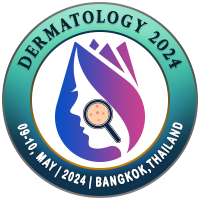
Liza Mkhitaryan
Clinica Mona Lisa, SpainTitle: Prospective clinical study and ultrasound assessment in patients with bruxism treated with botulinum toxin
Abstract
Introduction: Bruxism (BRX) can be defined as clenching and/or grinding of the teeth in a particularly intense or involuntary way. It occurs interchangeably during sleep or while awake due to repeated contraction and/or hypertrophy of the masticatory muscles. Treatments are mainly intended to limit induced temporomandibular joint (TMJ) damage and are manifold: irreversible occlusion, bite splints, pharmacological and/or cognitive therapies. However, botulinum toxin type A (BoNT-A) is especially effective. The aim is to assess the attenuation or disappearance of BRX-related symptoms after injection of BoNT-A due to relaxation of the masticatory muscles (especially the masseter muscles). Materials and Method: this is a clinical, prospective and longitudinal study on 43 adult female patients aged between 24 and 67 (37.0 ± 9.6). It was carried out from September 2018 to October 2019. Assessment controls were performed before, two weeks and four months after the first treatment with BoNT-A, and two weeks and five months after the second treatment. Digital photographs were taken at each control visit, the Smith-Knight Tooth Wear Index was assessed and orthopantomography (OPG) was performed. Bigonial diameters were measured with a digital caliper. The masseter muscles were assessed bilaterally, at rest and during contraction, by ultrasound. Results: after BoNT-A treatment, 26% of patients were free of BRX, whereas considerable improvements were observed in the remaining 74%. Adverse effects were mild and of short duration.
Conclusion: BoNT-A treatment was able to prevent lesions on orofacial structures (teeth, jaw muscles, TMJ), and at the same time relieve pain and associated symptoms induced by repeated muscle contraction in BRX.
Conclusion: BoNT-A treatment was able to prevent lesions on orofacial structures (teeth, jaw muscles, TMJ), and at the same time relieve pain and associated symptoms induced by repeated muscle contraction in BRX.
Biography
WILL BE UPDATED SOON.

